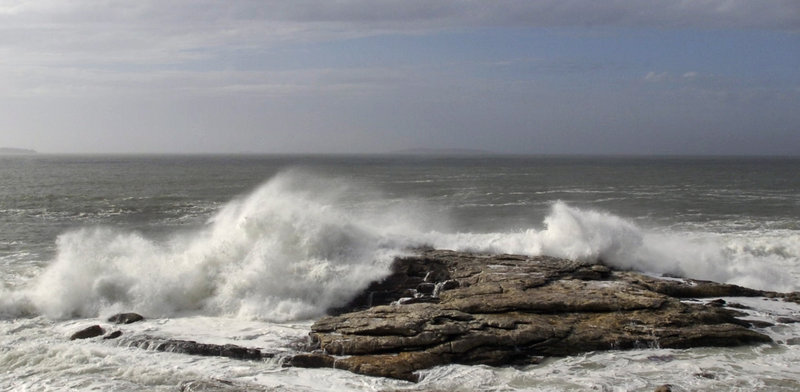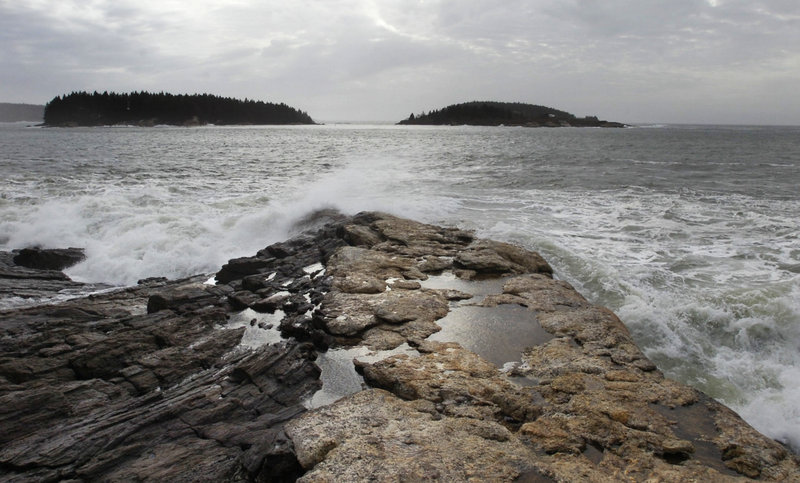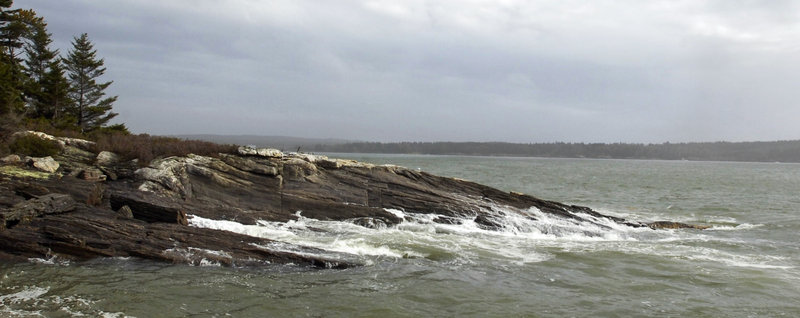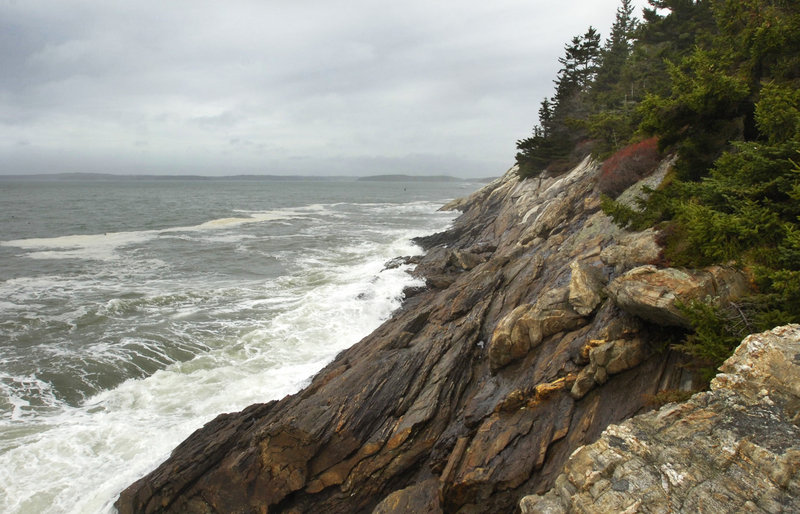PHIPPSBURG — In Maine, it’s all about place.
Inspiration comes in many forms, but we know from our history that artists through time have chosen to work in Maine because this place reveals itself in dramatic and sometimes unexpected turns.
This truth became apparent last week during Superstorm Sandy. Its leading edge blew into our latitude Monday afternoon, and during the next 24 hours it hit hard along the coast.
The storm did not justify its advance billing up here. In Maine, this was not the storm of the century. It might not have even been the storm of the year.
But coastal storms, no matter their degree of potency, still present moments of awe, intrigue and fear.
No matter how often we have seen it, there’s something inspiring about a whipped sea rolling hard against a ledge of granite and bursting into a cloud of frothing water, or a gust of wind uprooting tall spruce trees.
When these things happen, we better understand why John Marin came to Maine and made his first studio in a cabin just yards from the coast, or why Winslow Homer positioned his painting place at water’s edge at Prouts Neck.
They may have put themselves in harm’s way, but their work benefited from the richness and authenticity of their experience.
During his first summer in Maine, Marin went to bed each night with high water lapping just yards from his cabin door in Phippsburg. Had he been in that shack last Monday, he would have gotten wet. The shack, which barely remains standing on a private island on the eastern edge of Casco Bay, took on water — just as it has since Marin lived here briefly almost 100 years ago. The dilapidated old building moved one storm closer on a steady path toward decimation.
But give him credit for this: Marin knew his subject. The mystery of the ocean became ingrained in his subconscious and a part of his soul. The same is true of Homer, who was known to head out on the rocks during a storm, not just to see the waves, but to feel the spray against his clothes and taste its salty breath.
Through their visual language, Marin, Homer and others who have come before or after created an understanding of Maine that is known around the world. We’ve become so familiar with their work, a photograph from the storm reminds us more of their paintings than the actual thing.
As much as Sandy proved a modest blow for people in Maine, the storm allowed us to reflect on and appreciate the wonder of what happens when land, sea and sky come together full of sound and fury.
The colors mix in a palette of green, gray, black and white, with bursts of red, orange and yellow from leftover fall colors. As the water churns from green to white, speckled by glints of silver, so do the clouds turn from white to gray to black as they roll above the water like a freight train. Unbowed by the power of the sea, the purple-hued rocks turn back the waves with a thundering smack.
In the wind, the green trees bend and sway. We hear them crack and pop as they rock back and forth. Those that are uprooted come down with a brilliant swoosh as limbs from falling trunks rip through the branches of still-standing timbers. Others snap mid-shaft with a sudden crack and cascade to the earth, their thud softened by a bed of moss, dirt and pine needles.
The wind creates its own symphony with hints of violins, flutes and pulsing bass drums.
And then there is silence. Amid the raging storm, we are given quiet moments where everything settles. The seas take a breather, the trees cease swaying, the wind pauses.
We move from moments of raw energy to near stillness, and are reminded again of the wonder of this place — and why this place grounds us, centers us and makes us whole.
Staff Writer Bob Keyes can be contacted at 791-6457 or:
bkeyes@pressherald.com
Twitter: pphbkeyes
Send questions/comments to the editors.







